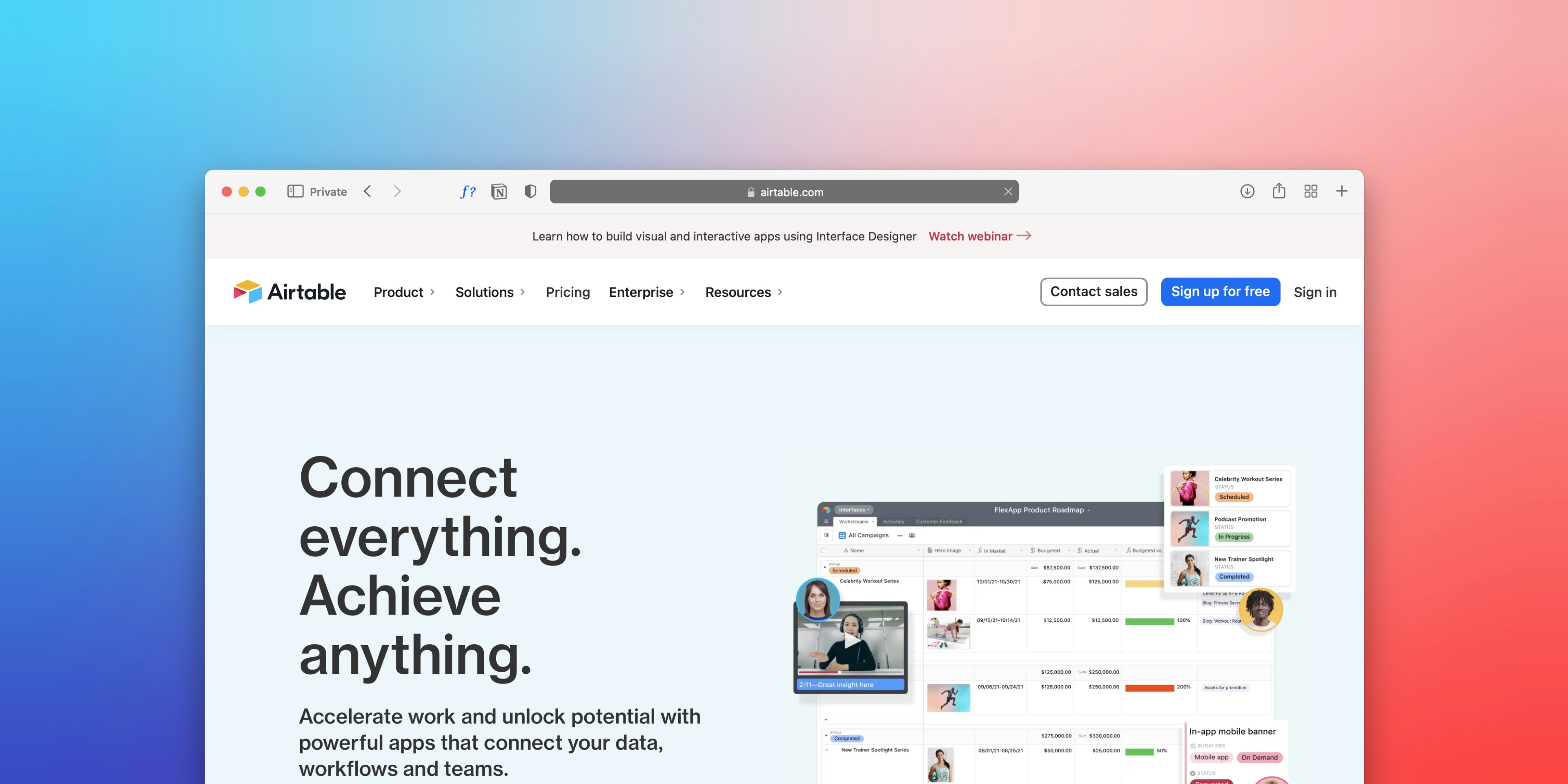-p-2000.png)


Top 12 Low Code Use Cases: What Can You Build With Low Code?

Businesses look for solutions that are easy to implement and scalable. With the advent of low-code and no-code applications, companies can easily integrate systems to improve efficiency. Understanding the functionalities and applications of low code helps you decide if it is the best solution for your business.
In the following piece, we explore several use cases of low code and how it may benefit your business.
What Is Low Code?
Low-code is a software development approach that minimizes hand-coding to develop digital transformative solutions. It uses pre-built UI components, boilerplate scripts, integrations, and visual workflows that reduce the time for software development and make it easier to deploy them. Solutions built using low-code solutions are easier to troubleshoot, test, and revisit old iterations.
Low-code platforms are user-friendly and designed to meet the objectives of corporates, startups, or small businesses. It allows them to streamline their planning processes and eliminate hours of coding when developing a software solution.
Top 12 Use Cases Of Low Code
Low-code or no-code solutions help you adapt to technological advancements while reducing the cost of ownership and improving governance and risk management. A professional no code agency can help you deploy these solutions for your business.
Having a low-code or no-code capability helps businesses in multiple ways, including:
1. Building Omnichannel Touchpoints For Data Collection
Businesses often look for multiple touchpoints to collect user data that help enhance their systems. Low-code applications come with simple integration methods like APIs that make it easy to connect multiple applications in a way that is tried, tested, and fail-proof at various points. Implementing such applications ensures the connections are secure and help enhance organizational efficiency.
2. Product Catalogs
Companies require user-friendly and interactive product catalogs. Specialized low-code or no-code applications come with pre-built systems that make it easy for any business to create product catalogs. These catalogs make it easy to share or sell items and streamline the process.
3. Enhancing Employee And Client Experience
Administration and operations teams spend several hours of their daily time trying to manage requests and provide internal support and consolidate data. Low-code solutions may help these teams automate their workflows and increase productivity. Employees may interact with these systems to find solutions for troubleshooting or understanding business policies without having to interact with administration or HR teams.
4. Enhancing Customer Experience
Customer service teams may receive several queries that require the same response and can easily be resolved without intervention. Such tasks may take up a bulk of the support team’s time and can easily be automated using low-code applications. Clients or customers may interact with user-friendly systems to perform simple tasks such as profile changes or other basic troubleshooting, thereby reducing their wait time and improving customer service.
5. Building Data Analytics Solutions
Businesses rely heavily on data to make their business decisions. Building complex processes requires huge investments, and companies may rely on digital twins to simulate operations before implementation.
Low-code capabilities allow companies to create them, along with applications for reporting and analyzing the process. It takes less time than traditional coding and helps businesses see real-time insights to make decisions. Several low-code platforms make it easy to build innovative data visualization charts with advanced storytelling capabilities to ease understanding.
6. Legacy Modernization
Legacy systems built using traditional coding may make it hard to adopt new technologies. Businesses require solutions to extend support or completely replace these solutions while being cost-effective. Low-code platforms are built for the future. They are highly customizable software ecosystems that simplify the transition while being quick and efficient.
7. IoT Integration
Developing applications for the internet of things (IoT) requires connecting a disparate mix of technologies and data sources. It requires specialized skills to configure, maintain and troubleshoot these systems to ensure they run smoothly. IT professionals and companies may find it hard to keep up with the changing technologies and adopt them on time to ensure their systems do not fail.
Fortunately, low-code or no-code platforms eliminate these challenges and make it easier for teams to drive results for the business through API and user-friendly data output systems.
8. Regulatory Compliance
Organizations enforce several regulatory and compliance policies to maintain the quality standards of their business. Change in these policies requires organizations to adapt and regulate their operations. These may lead to system changes or documentation compliances that require additional support.
Low-code platforms empower these businesses to quickly build applications that meet regulatory compliance within a short duration and at low costs. These may include applications to collect data, maintain specific manufacturing records or implement new tax compliances.
9. Multi-Device Interoperability
In the day and age of the cloud, devices and applications can seamlessly communicate across devices. Low-code platforms often offer cross-platform interoperability that allows users to create applications that operate efficiently on multiple devices.
10. Implement Microservice Platforms
Micro-services is an architectural and organizational software development approach that composes independent services within one ecosystem. These are connected through APIs. It helps improve scalability and efficiency and allows different teams to optimize each service for the required business functionality. Low-code platforms help enterprises switch from monolithic applications to a microservices-based approach.
11. Supply Chain Management
Supply chain management is critical to ensure goods get packed and reach the necessary location. Most businesses still deal with several disparate units making the entire process tedious. Supply chain management still requires manual processes at different stages. Low-code applications can help create complex workflows with ease, customized to suit the requirements of each company. It helps streamline the process and increases the efficiency of the ecosystem.
12. Minimum Viable Products (MVP)
Building a new product requires immense time, effort, and resources. Using a low-code or no-code tool allows companies to build MVPs using less time. These tools allow for easy modifications till the team is satisfied with the results. They may also let teams refer to old iterations with ease and pick features that may seem suitable to the product. Building MVPs using a low-code or no-code platform is a good option to help kickstart crowdfunding projects.
Industries That Benefit From Low Code
There are abundant applications of using low-code or no-code platforms. Some industries that benefit from using low-code or no-code platforms are:
1. Software-as-a-Service(Saas)
Low-code tools make it easy to build scalable and agile SaaS products within record time. It allows the reusability of modules in the form of pre-configured functionalities that help build robust systems.
2. Healthcare
Low-code applications seamlessly integrate with existing healthcare systems, making them more user-friendly and efficient. It helps doctors and administrators build and maintain patient-centric data, including diagnostics reports, and virtual care platforms, and securely share data across systems.
3. Education
Several online platforms provide comprehensive learning opportunities to students across the globe. Low-code applications help these platforms and educational institutions streamline everything from student data management, fee payment, class schedules, and conduct live sessions through secure integrations.
4. Finance
Finance and banking require secure and dynamic platforms that follow compliance policies while being user-friendly. Low-code platforms enable banks to create several digital products and services within days rather than spending months on prototyping and testing.
5. Retail
Low-code empowers retailers to create scalable systems that integrate their sales channels while being customer-centric. It helps them easily integrate inventory across multiple locations and ease operations.
6. Insurance
Low-code helps create a single interface for policyholders and agents to update data and manage claims. It makes the process seamless and simplified and allows insurance companies to process claims faster.
When Should You Not Use Low Code?
The requirements of each business differ from the others. Recognize if low-code and no-code applications can meet your business demands before you invest in the process. Here are some scenarios when low-code may not be the best solution for your company:
1. Require Extensive Customization
Low-code platforms come with some defined interfaces and systems that you may not be able to customize. Their functionalities may be simple, but may not be exactly what your business requires.
2. Complex Use Case
Some low-code platforms may require coding to implement specific functionalities for your business. You may need additional tech support and developers to write codes or tackle bugs.
3. Security And Data Privacy
While low-code platforms are secure, they may not provide you with complete control over the data you collect through them. Businesses need to understand the security layers implemented by these platforms, especially when implementing data-sensitive programs.
Also read:
Difference Between No-Code and Low-Code
How to Do Web Design Without Coding
Conclusion
Low-code and no-code platforms are an excellent choice to implement flexible, efficient, and easy-to-scale applications. With a few simple steps and integrations, these platforms allow businesses to create systems that ease their daily operations.
Given the time constraints businesses face, engaging with a low-code or no-code agency ensures smooth integration and security checks while minimizing the employee learning curve.
Whether you're an experienced coder or have never written a line of code, we can help you create amazing things using low code/no code. Our services include but are not limited to custom web and app development, process automation, data visualization, and more.
Implement no-code applications with us.
About Seattle New Media
We're a no-code/low-code agency that specializes in no-code, low-code development for businesses of all sizes. We use the latest tools and technologies to deliver high-quality solutions that our clients need without the hassle and expense of traditional development. Contact us today to get started!

FAQ
Editorial Team
Publisher
Businesses look for solutions that are easy to implement and scalable. With the advent of low-code and no-code applications, companies can easily integrate systems to improve efficiency. Understanding the functionalities and applications of low code helps you decide if it is the best solution for your business.
In the following piece, we explore several use cases of low code and how it may benefit your business.
What Is Low Code?
Low-code is a software development approach that minimizes hand-coding to develop digital transformative solutions. It uses pre-built UI components, boilerplate scripts, integrations, and visual workflows that reduce the time for software development and make it easier to deploy them. Solutions built using low-code solutions are easier to troubleshoot, test, and revisit old iterations.
Low-code platforms are user-friendly and designed to meet the objectives of corporates, startups, or small businesses. It allows them to streamline their planning processes and eliminate hours of coding when developing a software solution.
Top 12 Use Cases Of Low Code
Low-code or no-code solutions help you adapt to technological advancements while reducing the cost of ownership and improving governance and risk management. A professional no code agency can help you deploy these solutions for your business.
Having a low-code or no-code capability helps businesses in multiple ways, including:
1. Building Omnichannel Touchpoints For Data Collection
Businesses often look for multiple touchpoints to collect user data that help enhance their systems. Low-code applications come with simple integration methods like APIs that make it easy to connect multiple applications in a way that is tried, tested, and fail-proof at various points. Implementing such applications ensures the connections are secure and help enhance organizational efficiency.
2. Product Catalogs
Companies require user-friendly and interactive product catalogs. Specialized low-code or no-code applications come with pre-built systems that make it easy for any business to create product catalogs. These catalogs make it easy to share or sell items and streamline the process.
3. Enhancing Employee And Client Experience
Administration and operations teams spend several hours of their daily time trying to manage requests and provide internal support and consolidate data. Low-code solutions may help these teams automate their workflows and increase productivity. Employees may interact with these systems to find solutions for troubleshooting or understanding business policies without having to interact with administration or HR teams.
4. Enhancing Customer Experience
Customer service teams may receive several queries that require the same response and can easily be resolved without intervention. Such tasks may take up a bulk of the support team’s time and can easily be automated using low-code applications. Clients or customers may interact with user-friendly systems to perform simple tasks such as profile changes or other basic troubleshooting, thereby reducing their wait time and improving customer service.
5. Building Data Analytics Solutions
Businesses rely heavily on data to make their business decisions. Building complex processes requires huge investments, and companies may rely on digital twins to simulate operations before implementation.
Low-code capabilities allow companies to create them, along with applications for reporting and analyzing the process. It takes less time than traditional coding and helps businesses see real-time insights to make decisions. Several low-code platforms make it easy to build innovative data visualization charts with advanced storytelling capabilities to ease understanding.
6. Legacy Modernization
Legacy systems built using traditional coding may make it hard to adopt new technologies. Businesses require solutions to extend support or completely replace these solutions while being cost-effective. Low-code platforms are built for the future. They are highly customizable software ecosystems that simplify the transition while being quick and efficient.
7. IoT Integration
Developing applications for the internet of things (IoT) requires connecting a disparate mix of technologies and data sources. It requires specialized skills to configure, maintain and troubleshoot these systems to ensure they run smoothly. IT professionals and companies may find it hard to keep up with the changing technologies and adopt them on time to ensure their systems do not fail.
Fortunately, low-code or no-code platforms eliminate these challenges and make it easier for teams to drive results for the business through API and user-friendly data output systems.
8. Regulatory Compliance
Organizations enforce several regulatory and compliance policies to maintain the quality standards of their business. Change in these policies requires organizations to adapt and regulate their operations. These may lead to system changes or documentation compliances that require additional support.
Low-code platforms empower these businesses to quickly build applications that meet regulatory compliance within a short duration and at low costs. These may include applications to collect data, maintain specific manufacturing records or implement new tax compliances.
9. Multi-Device Interoperability
In the day and age of the cloud, devices and applications can seamlessly communicate across devices. Low-code platforms often offer cross-platform interoperability that allows users to create applications that operate efficiently on multiple devices.
10. Implement Microservice Platforms
Micro-services is an architectural and organizational software development approach that composes independent services within one ecosystem. These are connected through APIs. It helps improve scalability and efficiency and allows different teams to optimize each service for the required business functionality. Low-code platforms help enterprises switch from monolithic applications to a microservices-based approach.
11. Supply Chain Management
Supply chain management is critical to ensure goods get packed and reach the necessary location. Most businesses still deal with several disparate units making the entire process tedious. Supply chain management still requires manual processes at different stages. Low-code applications can help create complex workflows with ease, customized to suit the requirements of each company. It helps streamline the process and increases the efficiency of the ecosystem.
12. Minimum Viable Products (MVP)
Building a new product requires immense time, effort, and resources. Using a low-code or no-code tool allows companies to build MVPs using less time. These tools allow for easy modifications till the team is satisfied with the results. They may also let teams refer to old iterations with ease and pick features that may seem suitable to the product. Building MVPs using a low-code or no-code platform is a good option to help kickstart crowdfunding projects.
Industries That Benefit From Low Code
There are abundant applications of using low-code or no-code platforms. Some industries that benefit from using low-code or no-code platforms are:
1. Software-as-a-Service(Saas)
Low-code tools make it easy to build scalable and agile SaaS products within record time. It allows the reusability of modules in the form of pre-configured functionalities that help build robust systems.
2. Healthcare
Low-code applications seamlessly integrate with existing healthcare systems, making them more user-friendly and efficient. It helps doctors and administrators build and maintain patient-centric data, including diagnostics reports, and virtual care platforms, and securely share data across systems.
3. Education
Several online platforms provide comprehensive learning opportunities to students across the globe. Low-code applications help these platforms and educational institutions streamline everything from student data management, fee payment, class schedules, and conduct live sessions through secure integrations.
4. Finance
Finance and banking require secure and dynamic platforms that follow compliance policies while being user-friendly. Low-code platforms enable banks to create several digital products and services within days rather than spending months on prototyping and testing.
5. Retail
Low-code empowers retailers to create scalable systems that integrate their sales channels while being customer-centric. It helps them easily integrate inventory across multiple locations and ease operations.
6. Insurance
Low-code helps create a single interface for policyholders and agents to update data and manage claims. It makes the process seamless and simplified and allows insurance companies to process claims faster.
When Should You Not Use Low Code?
The requirements of each business differ from the others. Recognize if low-code and no-code applications can meet your business demands before you invest in the process. Here are some scenarios when low-code may not be the best solution for your company:
1. Require Extensive Customization
Low-code platforms come with some defined interfaces and systems that you may not be able to customize. Their functionalities may be simple, but may not be exactly what your business requires.
2. Complex Use Case
Some low-code platforms may require coding to implement specific functionalities for your business. You may need additional tech support and developers to write codes or tackle bugs.
3. Security And Data Privacy
While low-code platforms are secure, they may not provide you with complete control over the data you collect through them. Businesses need to understand the security layers implemented by these platforms, especially when implementing data-sensitive programs.
Also read:
Difference Between No-Code and Low-Code
How to Do Web Design Without Coding
Conclusion
Low-code and no-code platforms are an excellent choice to implement flexible, efficient, and easy-to-scale applications. With a few simple steps and integrations, these platforms allow businesses to create systems that ease their daily operations.
Given the time constraints businesses face, engaging with a low-code or no-code agency ensures smooth integration and security checks while minimizing the employee learning curve.
Whether you're an experienced coder or have never written a line of code, we can help you create amazing things using low code/no code. Our services include but are not limited to custom web and app development, process automation, data visualization, and more.
Implement no-code applications with us.
About Seattle New Media
We're a no-code/low-code agency that specializes in no-code, low-code development for businesses of all sizes. We use the latest tools and technologies to deliver high-quality solutions that our clients need without the hassle and expense of traditional development. Contact us today to get started!
FAQ
Editorial Team
Publisher




Hi, I'm Mike!
If you are enjoying the article, feel free to subscribe to our monthly newsletter.
If you have any project requirements, please contact us.




.png)









